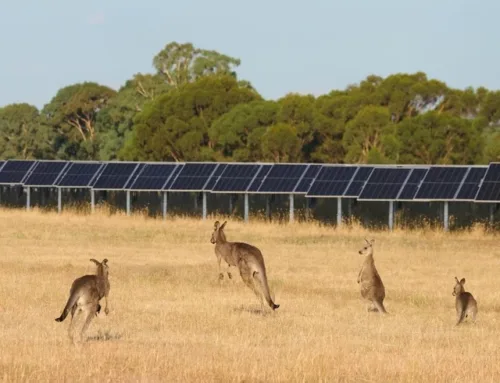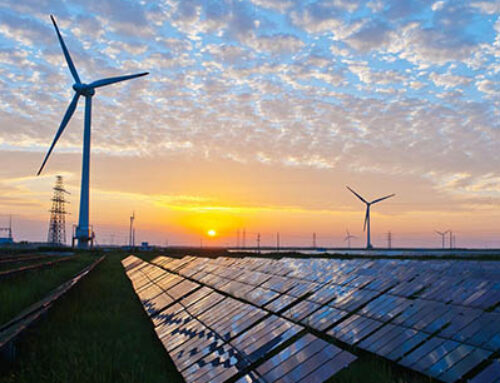Water Nexus: Can Semiconductors and Sustainability Coexist in Taiwan?
November 5, 2025
Written by Alexis Huang
Image credit: TSMC Arizona
In 2021, when Taiwan faced its worst drought in 56 years, the world confronted an uncomfortable reality: the chips powering our phones, cars, and satellites rely on a resource that nature no longer guarantees—water.
This vulnerability stands in stark contrast to the industry’s origins. In the 1980s, amid Taiwan’s declining chemical sector, Morris Chang was invited to return to Asia to lead a critical project that would lay the foundation for the semiconductor industry. In 1987, he founded the Taiwan Semiconductor Manufacturing Company (TSMC). Today, Taiwan’s economy is at the epicentre of the global semiconductor industry, with the sector valued at $165.6 billion in 2024. One key factor in its success lies in the pure-play foundry model, which is manufacturing chips for clients rather than designing its own.
TSMC’s manufacturing success comes at an ecological cost. The company accounts for around 150,000 tonnes of water per day and 6.4% of the national electricity consumption. With the challenges posed by climate change, experts are raising concerns about its impact on water scarcity. This intensity brings us to the water-energy nexus, where water and energy are interdependent. In essence, the semiconductor industry demands enormous volumes of water to generate energy, while its water supply also depends on a constant energy source. This situation thus raises a question: can TSMC continue to dominate the industry while ensuring sustainable water usage?
The Water-Energy Nexus in TSMC
In semiconductor fabs, water is an equally crucial resource for cleaning wafers, thin, flat slices of silicon that serve as the foundation for microchip fabrication. They depend on each other: water is extensively used to cool machines and clean semiconductors, while electricity powers the systems that circulate water, purify it, and generate energy from it.
96.6% of water used in semiconductor manufacturing comes from natural freshwater sources, while only 3.2% is recycled. In other words, most of the water is used once and discharged, rather than being continuously reused. Meanwhile, roughly 84% of the electricity powering fabs still originates from fossil fuels, linking chip production to both carbon emissions and hydrological stress. At TSMC, this interdependence is intensified by its pure-play foundry model: as global demand for technology rises, so does the pressure on Taiwan’s limited water and energy resources.

Image credit: Steve Blank
The 2021 drought made this tension visible. With fewer typhoons and irregular rainfall, reservoirs supplying Hsinchu Science Park—the heart of Taiwan’s semiconductor cluster—fell to historic lows. Scientists also attributed the shortage to rising temperatures.
Progress and Barriers Toward Sustainability
To address these vulnerabilities, TSMC has invested heavily in advanced water management. In 2022, the company launched the Southern Taiwan Science Park (STSP) Reclaimed Water Plant, which converts treated wastewater into an industrial-grade supply. By 2026, this facility is expected to support up to 36,000 tonnes of reclaimed water daily, enough to meet 60% of the company’s local demand by 2030. While this marks significant progress, it also underscores how dependent fabs remain on external water sources. Yet even this success leaves a 40% reliance on traditional reservoirs—a vulnerable reliance as Taiwan faces longer dry seasons and fewer typhoons.
In 2024, TSMC introduced the Ammonia Nitrogen Wastewater Diversion and Processing Inspection System. This system sorts wastewater based on ammonia nitrogen levels, sending low-concentration water to biological treatment and high-concentration water to a degassing membrane process. At Fab 20 Phase 1, this has already resulted in a 40% reduction in discharged wastewater conductivity and a 30% cut in chemical reagent use. These advances show that incremental innovation can reduce harm. But they also show the scale of the problem, that is, the sector’s overall expansion outpaces each fab’s progress. Beyond Taiwan, TSMC’s 15-acre Industrial Water Reclamation Plant at its manufacturing complex in Phoenix, Arizona—scheduled to begin operations by 2028—illustrates how the water-energy dilemma follows the industry. Located in the drought-stricken Colorado River Basin, the facility aims to recycle nearly all on-site water, positioning it as a model for adaptation in arid environments.
While the semiconductor industry has made progress toward sustainability, there is still a gap between adopting clean energy and fully integrating it across all operations. Many existing manufacturing facilities need major upgrades to handle renewable energy, which comes with high upfront costs. For example, TSMC’s new expansion in Arizona has led to higher construction costs and the need for specialised worker training. As these structural challenges intensify, the focus shifts from technological capability to governance, encompassing institutional frameworks, policy alignment, and regulatory coordination necessary to support a sustainable industrial transition.
Renewable energy itself also has challenges. Solar and wind power are variable, and semiconductor fabs need a steady, reliable supply of electricity. Even though solar energy is growing rapidly worldwide, the International Energy Agency recently lowered its global renewable power capacity forecast by 248 gigawatts to 4,600 GW by 2030, mainly due to policy changes in the U.S. and China. This shows how difficult it can be to ensure a consistent and sufficient energy supply.
The global semiconductor supply chain adds another layer of complexity. Implementing clean energy across the entire supply chain is challenging. Even though global chipmakers like TSMC, Intel, and Samsung pledge to power operations with 100% renewable energy, these targets may not be reached until 2030 or later. The path remains steep. Semiconductor manufacturing remains highly resource-intensive, with fabs now requiring costly retrofits. Global electricity demand for chip production is expected to reach 237 terawatt-hours by 2030, contributing to rising greenhouse gas emissions.
Can Growth and Sustainability Coexist?
TSMC’s efforts show that technological solutions can ease the strain, but they do not erase the underlying vulnerability. Water recycling plants, wastewater innovations, and overseas facilities may reduce pressure, yet their sustainability strategy cannot fully insulate them from ecological volatility. At the same time, the slow pace of renewable integration and the high demands of chip manufacturing mean that sustainability depends on more than corporate initiatives — it ultimately depends on national infrastructure reform, regional cooperation, and diversified energy sourcing.
In the long run, TSMC’s ability to dominate the industry will depend on its capacity to achieve sustainable water and energy management. Without deeper structural reform in these systems, its long-term leadership may be undermined by the very resources it consumes.
Alexis Huang is a graduate of Ming Chuan University, where her thesis evaluated corporate social responsibility (CSR) and environmental practices in Taiwan’s convenience store sector. Her research interests include environmental planning and energy transition.
Search
RECENT PRESS RELEASES
Related Post




